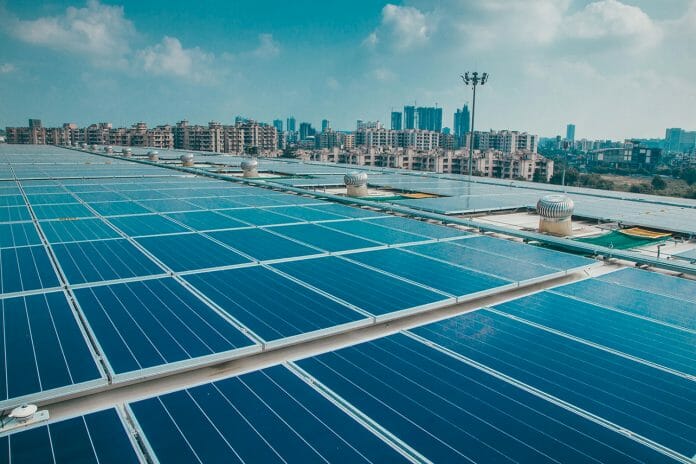The energy transition is in full swing, but are consumers convinced of the benefits? Wavering consumer confidence may stall progress, according to a new Energy Consumer Confidence Index (ECCI).
Modeled on established consumer confidence indicators, the ECCI draws upon an EY survey of 36,000 residential energy consumers across 18 markets to understand consumer confidence today and three years from now, across five factors – the stability of energy providers’ business; value created by providers for consumers and their community; ability to
access clean energy options; access to affordable energy; and regulator or government support for a fair and equitable energy transition. The results reveal some stark findings –consumers are struggling to see the benefits of the energy transition now and aren’t confident that things will improve in the future.
Mark Bennett, EY Asia-Pacific Energy & Resources Customer Experience Transformation Leader, says: “Energy consumer confidence is an important factor in driving actions and investment in new energy solutions, and will accelerate, or hinder, the breadth and momentum of the energy transition. If it continues to waver, net-zero pledges and clean energy ambitions are unlikely to be fully realized. This is a wake-up call for all players in the energy ecosystem who together need to address this challenge to secure a better energy future.”
Energy transition progress and consumer confidence
To better understand the impact of the energy transition on consumer confidence, EY has mapped the ECCI against the World Economic Forum’s Energy Transition Index, which benchmarks countries, including 2,000 Malaysian consumers, across 38 indicators of energy transition progress. The findings reveal an interesting correlation between countries’ progress
in the energy transition and energy consumer confidence. As a market progresses through the energy transition, consumer confidence first rises, reflecting positive sentiment around the possibilities of the future, before falling sharply. It seems that as the scale, complexity and disruption of the journey move from theory to reality, the impacts hit home. The index also finds a link between consumer confidence, accessibility and affordability. For example, consumers on lower incomes have lower confidence, perhaps reflecting a feeling of being unable to access or afford new energy solutions, such as rooftop solar, home battery storage and electric vehicles (EVs). To date, a focus on higher-income consumers as the early adopters of these solutions has made it more difficult for people on lower incomes to participate in the energy transition and see its benefits.
Lessons from different market approaches
Certain markets have managed to avoid the link between energy transition progress and poor confidence. In France, a combination of market design, government interventions and nuclear power generation, has helped create a predictable and stable market structure. In the Netherlands, proactive community engagement and broad collaboration across society has
given consumers’ confidence in their ability to access safe, affordable energy in the future. In Malaysia, consumers still have relatively high levels of confidence in the country’s energy market design and trust in their energy providers, with 93% wanting their energy provider to play an even bigger role in helping them navigate the energy transition.
Mark says: “Building and maintaining consumer confidence throughout the energy transition journey is an important determinant of a country’s ability to achieve and accelerate its decarbonization goals. Malaysia is now in a unique position to learn from the experiences of countries that are further along in their energy transition journey and can choose to do some things differently to achieve its own Net Zero Emission commitments.
Maintaining a stable energy market will give consumers the confidence to make investments in new energy solutions while providing them with a number of options to help them get started. Both will be important enablers to attract more Malaysian consumers to the energy space in the years ahead.”
Affordability is also an important factor for Malaysian energy consumers. With the ongoing cross-subsidy in the electrical tariff and subsidy for certain grades of petrol and diesel from the Government, Malaysia would need to spend around US$400 billion in new investments for energy transition, according to International Renewable Energy Agency’s (IRENA) recent
estimates. Mark added: “Malaysian consumers are ultimately paying for the energy transition and funding this
investment, whether through energy tariffs, taxes, levies and subsidies, or new product purchases such as rooftop solar panels and EVs. A positive takeaway from the research is that over half of Malaysians (57%) say they are willing to pay more for sustainable energy products and services. It is reasonable to assume that if consumers are to pay more for their
energy, they will expect more value from their energy providers, at least over the medium term.”
Collaboration around four key actions
Globally, the success of the energy transition depends on rebuilding consumer confidence now — and it will require a concerted cross-sector, cross-government effort. All players in the energy ecosystem need to come together to give consumers the energy experience they want. Malaysia needs to invest $375 bln in renewables to reach 2050 climate goals – report | Reuters
EY has identified four key actions that can encourage and support consumers to make behavioral changes and investments that will accelerate our journey to a better energy future: 1) Collaborate to create consumer-centric ecosystems; 2) Target lifestyles and individual actions; 3) Value the energy intangibles; 4) Master behavioural science. For comprehensive
insight, index analysis and more details of the four key actions,









